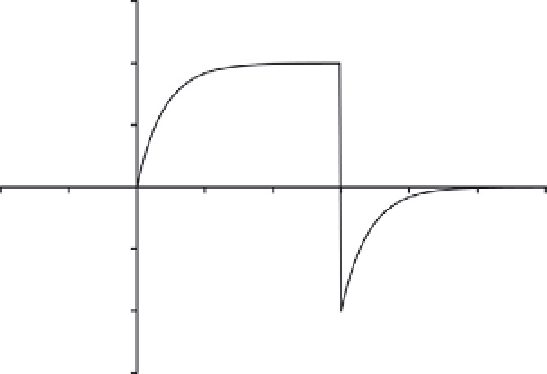Biomedical Engineering Reference
In-Depth Information
i
Circuit
Element
Circuit
Element
i
FIGURE 9.3
A simple electric circuit illustrating current flowing around a closed loop.
1.5
i
(A)
1
i
1
0.5
Circuit
Element
0
i
2
−
1
−
0.5
0
0.5
1
1.5
2
2.5
3
t
(s)
−
0.5
−
1
1.5
−
FIGURE 9.4
(Left) A sample current waveform. (Right) A circuit element with current entering terminal 1 and
leaving terminal 2. Passive circuit elements have two terminals with a known voltage-current relationship. Exam-
ples of passive circuit elements include resistors, capacitors, and inductors.
Current is typically a function of time, as given by Eq. (9.1).ConsiderFigure 9.4,with
the current entering terminal 1 in the circuit on the right. In the time interval 0 to 1.5 s, the
current is positive and enters terminal 1. In the time interval 1.5 to 3 s, the current is
negative and enters terminal 2 with a positive value. We typically refer to a constant
current as a DC current and denote it with a capital letter such as
, indicating it doesn't
change with time. We denote a time-varying current with a lowercase letter, such as
I
i(t)
,
or just
i
.
Kirchhoff's Current Law
Current can flow only in a closed circuit, as shown in Figure 9.3. No current is lost as it
flows around the circuit because net charge cannot accumulate within a circuit element and
charge must be conserved. Whatever current enters one terminal must leave at the other
terminal. Since charge cannot be created and must be conserved, the sum of the currents
at any node—that is, a point at which two or more circuit elements have a common



















